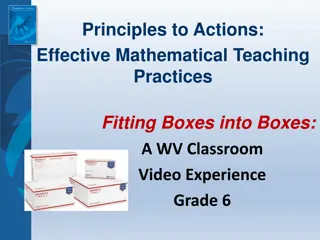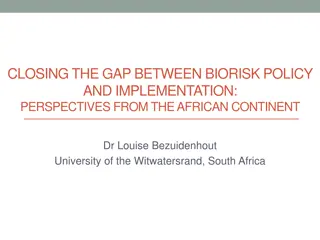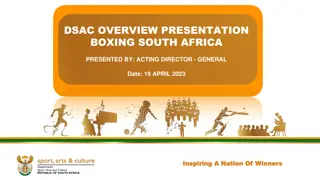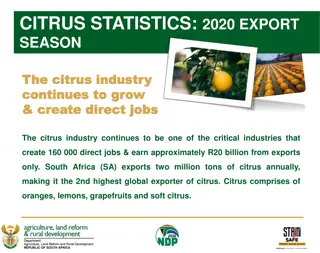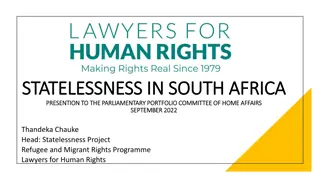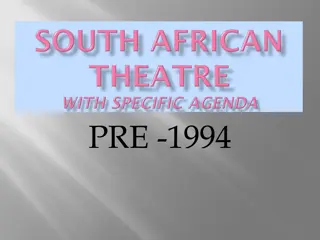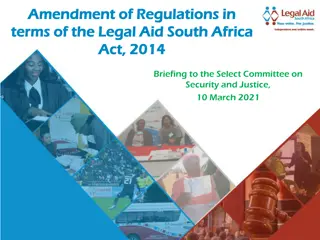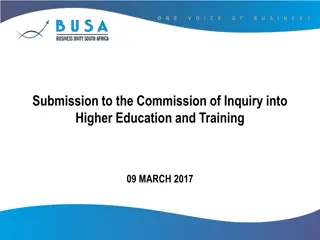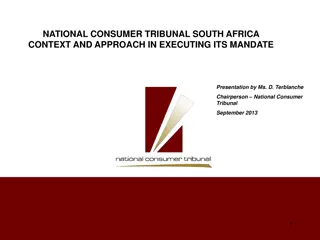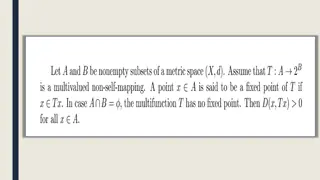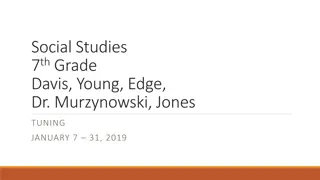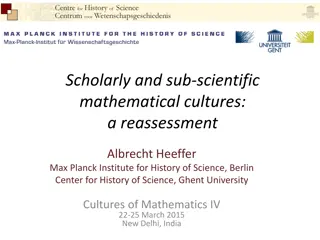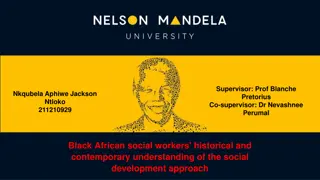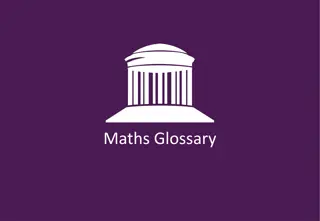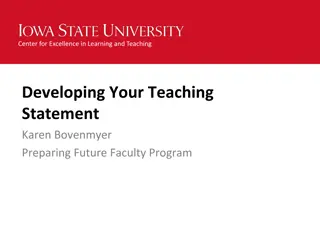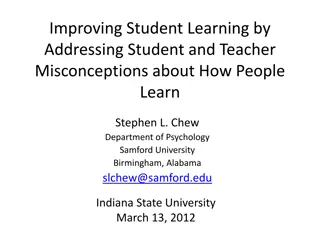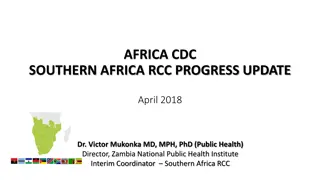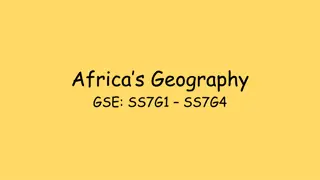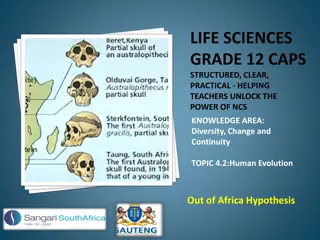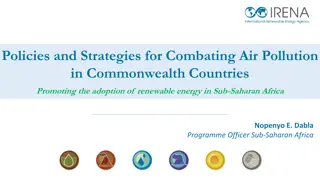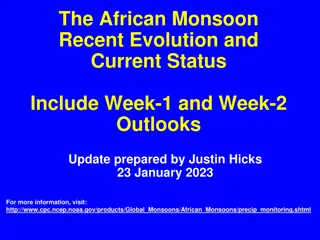Developing Mathematical Knowledge for Teaching in South Africa
Mathematics education in South Africa faces challenges due to insufficient Mathematical Knowledge for Teaching (MKfT) among teachers. Research highlights the need for teachers to possess both subject matter knowledge and pedagogical content knowledge to effectively teach mathematics. Identifying and learning from teachers with adequate MKfT could help improve number sense development among learners.
Download Presentation

Please find below an Image/Link to download the presentation.
The content on the website is provided AS IS for your information and personal use only. It may not be sold, licensed, or shared on other websites without obtaining consent from the author. Download presentation by click this link. If you encounter any issues during the download, it is possible that the publisher has removed the file from their server.
E N D
Presentation Transcript
LEARNING FROM PRACTICE: WHAT LEARNING FROM PRACTICE: WHAT MATHEMATICAL KNOWLEDGE IS MATHEMATICAL KNOWLEDGE IS NEEDED FOR DEVELOPING NUMBER NEEDED FOR DEVELOPING NUMBER SENSE SENSE Samukeliso Chikiwa, Lise Westaway & Mellony Graven Rhodes University
Maths education in South Africa Maths generally performed poorly in South Africa at all levels of education. International and national studies TIMSS and SACMEQ confirm our learners are behind their international counterparts The ANAs and the NCS results confirm the crisis (Fleisch, 2008; Spaull 2013; Taylor & Taylor, 2013; Robertson & Graven, 2015; Graven, 2016)
Reasons behind maths poor performance Research suggests that the majority of mathematics teachers lack adequate subject matter knowledge (SMK) and pedagogical content knowledge (PCK) to teach mathematics more effectively. According to Ball et al. (2008) SMK+PCK=Mathematical Knowledge for Teaching (MKfT). Research therefore claims that the majority of teachers in SA have inadequate MKfT Learners exit foundation phase without developing adequate number sense to solve mathematics problems. i.e. they exit with inefficient arithmetic strategies and as a result fail to cope with the arithmetic demands of the higher grades (Fleisch, 2008; Spaull 2013; Taylor & Taylor, 2013)
What is Mathematics Knowledge for teaching (MKfT)? Shulman (1987) proposed there is knowledge specific to the work of teaching which he name pedagogical content knowledge (PCK). This is the knowledge of the content of the subject and how to teach it Ball, Thames and Phelps (2008) refined Shulman s PCK to make it subject (mathematics) specific and provide a clearer understanding of what knowledge mathematics teaching requires and came up with MKfT. MKfT =subject matter knowledge + pedagogical content knowledge.
Model of Mathematical Knowledge for Teaching (Ball et al., 2008, p. 403)
Research generalises that mathematics teachers lack both content and pedagogy. However careful consideration makes us realise: it is not all teachers in SA who do not have adequate mathematics knowledge for teaching There are some teachers among us who possess the MKfT from whom we can learn. There is therefore a need to identify such teachers and learn from them
Why conduct this research ? We identified and selected one such teacher in one of our schools. This research sought to investigate what MKfT is enacted in this selected expert teacher and how she employs this knowledge in developing number sense through counting. Research question: What MKfT in relation to development of number sense through counting does an expert Grade 2 teacher have and use in her teaching?
Why counting? Counting introduces learners to the number world. According to the DBE (2011), counting enables learners to develop number concept, mental mathematics, estimation, calculation skills and recognition of patterns (p. 9). Counting is regarded as the first step to developing number sense (Naude & Meier, 2014). Counting is basic to development of number sense
Some literature review about counting During the early stages of learning to count, learners struggle to count in an accepted number word sequence from one to sixteen. Learning to count requires identification and mastery of the counting pattern. Learners often confuse the teen numbers and the decuple (teen and ty numbers) e.g. sixteen & sixty; seventeen & seventy. (Gifford, 2005;Reys, Lindquist & Smith, 2007; Haylock & Cockburn, 2008)
Methodology Qualitative research. Case study with one teacher as a sample, conveniently selected. Study conducted at a government school in Grahamstown I observed fifteen mathematics lessons over four weeks focusing on the counting sessions she conducted with the whole class, her first group and third group. Conducted two structured interviews, based on video recordings of selected observed lessons. Both the lessons and interviews were transcribed and analysed using MKfT framework.
Data analysis Sharing an excerpt from one of the lessons conducted by the selected teacher
Okay boys! It is time for Maths. Let us go to the back carpet. Come on come on let us be quick. [Learners move to the carpet and sit down facing the teacher s carpet chair. The teacher stands next to the beadstring in front of the learners] Quiet boys! We are going to count forward in ones. [Tr pulling the beads on the beadstring one at a time as the learners count] One, two, three, four, five, six, seven, eight, nine, ten, eleven, twelve T TLL [Tr reducing the tempo and emphasising the teen sound as she counts with the learners] thirteen, fourteen, fifteen, sixteen, seventeen, eighteen, nineteen [Tr then emphasises the ty sound and the units as she counts with the learners] twenty, twenty-one, twenty-two, twenty- three [Tr keeps quiet] twenty-four, twenty-five, twenty-six, twenty-seven, twenty-eight, twenty-nine, thirty, thirty-one thirty-two, thirty-three, thirty-four, thirty-four, thirty-five, thirty-six TLL LL Stop! I was on thirty-six, I want you to listen very carefully. What two numbers do I need to make thirty-six? Thirty-six [Tr putting emphasis on thirty] T LL Thirty and six T I need a thirty and a six! Good, Let s go on. TLL Thirty-seven, thirty-eight, thirty-nine, forty T Stop! How many tens do we have in forty? Julius?
Some interview extracts that influenced her counting sessions Her counting sessions were influenced by her understanding that there are five principles of counting that govern meaningful counting. (FI2, V2, T73). Counting is not just a component of just rote count, spit out of your mouth and it means absolutely nothing, it must be one to one, it must be an uttering the correct word on the correct number (FI2, V2, T23). if a child can see patterns they can do maths (FI2, V2, T103) because Maths is a pattern. It s the same thing over and over (FI2, V2, T105).
Model of Mathematical Knowledge for Teaching (Ball et al., 2008, )
Findings Findings: MKfT displayed during counting lessons
Conclusion Conclusion MKfT required to teach a seemingly easy concept like counting is complex. All the knowledge domains are significant for teaching but not all were useful in relation to the teaching of counting. We found that there is a strong interdependence between these MKfT domains and thus a very thin line between them. KCT is central to teaching of counting. All the other domains inform and influence how the teacher teaches. Through this research, we realised that the teacher was not always conscious of her MKfT. Her counting sessions were seamless and in many respects her MKfT was automated. Like an experienced driver, she did not stop to think about what MKfT she was drawing on at any particular moment in time.
The end The end Thank you Thank you Questions and COMMENTS Questions and COMMENTS





